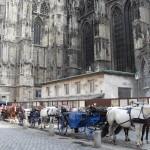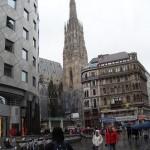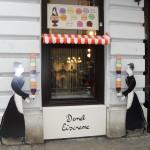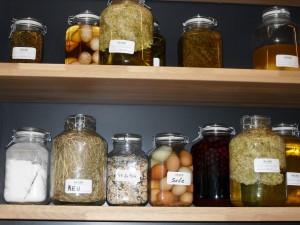 Sigmund Freud, apfelstrudel and Gustav Klimt’s The Kiss clinched my decision to honeymoon in Vienna. When you think about it, psychology, food and art are not the worst foundation for a good marriage. Oh, and Before Sunrise, the movie where Julie Delpy and Ethan Hawke spend a day in this romantic Austrian city falling in love.
Sigmund Freud, apfelstrudel and Gustav Klimt’s The Kiss clinched my decision to honeymoon in Vienna. When you think about it, psychology, food and art are not the worst foundation for a good marriage. Oh, and Before Sunrise, the movie where Julie Delpy and Ethan Hawke spend a day in this romantic Austrian city falling in love.
Famous for being the center of the Habsburg dynasty in the 15th century, Vienna used its newfound power for good, at least as far as beauty and the arts go. The city is brimming with cultural life, from music to food to architecture. The legacy of wealth pervades every inch of Vienna from the castles to the churches.
The center of the city was originally surrounded by a wall and moat for protection. In the 1800s the wall was turned into a road around the Innere Stadt, or central district, with a tram circling it. The Ringstrasse works extremely well for tourists who want to hop on and off as they sightsee.
In fact, the whole Innere Stadt is extremely easy to navigate and is filled with delights. We stayed at the Best Western Premiere Hotel Harmonie in the 9th district, also called Alsergrund & the University District. Slightly off the beaten track, this area was extremely quiet while still charming. I quite liked being in what felt like a livable neighborhood. It was nice to come back to after the hustle and bustle of the day.
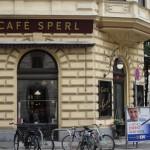
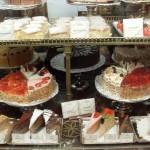
The museums in Vienna seemed to me to compare to those in Madrid, Paris and London. Two of my favorite local artists, Egon Schiele and Gustav Klimt, were well represented, especially at the Schloss Belvedere. This palace just outside the Ringstrasse features gorgeous gardens to stroll and countless rooms fitted out in marble and frescoes. You can almost imagine what life inside the chateau walls might have been like. Klimt’s “The Kiss” did not disappoint in person. Painted in 1908 and breathtakingly beautiful, accented with goldleaf, this artwork epitomizes the Art Nouveau style and still feels strikingly modern, especially in the old-world surroundings of the Belvedere.
Two other museums not to be missed are the Secession and the Kunsthistorisches. These fortresses of beauty actually represent two opposing sides of the spectrum. The Secession consisted of 19 progressive artists looking to buck the status quo. Klimt’s “Beethoven Frieze,” (remarkably from 1902) was considered outrageous in its time. Conversely, the Kunsthistorisches Museum couldn’t be more establishment. Brimming with booty from around the world, this remarkable building was built to house treasures, and the flagrant decadence is kind of breathtaking. I especially liked the Kunstkammer (cabinets of art and curiosities) and astonishing “Tower of Babel,” painted by Pieter Bruegel.
The Sigmund Freud Museum, which was quite near our hotel, was one of the most interesting sights I saw in Vienna. The building houses the apartment he lived and worked in from 1891 to 1938. At that time he was forced out of the country by the Nazis and fled to England. The rooms overflow with photos, letters, documents and even the chair he used to sit in while listening to patients. The whole presentation makes it easy to travel back in time and imagine the man behind the myth.
Another sight worth mentioning is the Katakomben (Catacombs) beneath St. Stephan’s Cathedral. The church, built and rebuilt since the 12th century, sports a dazzling roof of tile and numerous gothic features. In the 1730s with influenza and plague epidemics ravaging the city, Karl VI closed the cemetery and bodies were buried underneath St. Stephens instead. You can take a tour and see mass graves and “bone houses.” These rooms of remains have countless skeletons piled seemingly willy-nilly from floor to ceiling. There are also more elaborate burials for the Habsburgs, in the form of coffins and urns containing internal organs. For some reason, the Habsburgs were often cut up after death, their parts distributed to different places. This seemed even more chilling than the piles of bones, and a strange “privilege” to exercise.
My favorite part of touring Vienna was probably the food. I love to experience culture through gastronomic delights, partly because it’s a great excuse to sit after hours of exploring. There are so many exceptional and interesting choices for dining that I feel like I only touched the tip of the iceberg. The Beisln, or pubs, that dot the city have a cozy, relaxed feel and translate into a terrific spot to hang out in the evening. We ate at three, all delicious and all offering traditional fare, like Wiener Schnitzel (breaded meat), Tafelspitzragout (boiled meat and veggies) and Goulash (stew). The Gasthaus Rebhun, across the street from the Freud museum is comforting and the beer and wine selection is extensive. Two other great choices are Gasthaus Wikerl and the gloriously, fairy tale cute Griechenbeisl (serving food since the impossible to believe date of 1477) – this place may embody the birth of kitsch.
Another gastronomic discovery, of the more modern kind was Heuer, near the Secession (home of Klimt’s mural). In fact, putting those two together makes for a great afternoon. Cheerful and bright, this café serves fresh, seasonal food, like soups and salads. They specialize in “shrubs” (fruit syrup),” and fermented fruits and vegetables. One whole wall is lined with large jars of pickled produce, which give the place an apothecary vibe.
The coffee shops alone are worth a trip to this fair city. From the grand Café Central to the artsy Café Leopold Hawelka to the homey Café Sperl, these historic coffee houses provide a welcome respite at any time of the day. The desserts range from humble (apfelstrudel) to fanciful (Malakoff torte – buttercream and spongecake).
Taking the tradition of desserts to another level is Demel. Said to inspire the bakery in Wes Anderson’s The Grand Budapest Hotel, this house of confection is itself a confection, gilded, lacquered and marbled to within an inch of its life. It’s also a terrific place to buy souvenirs of chocolates for those at home whom you deem worthy.
And you can’t venture to Vienna without attending a concert. The home of Mozart, Beethoven and Strauss, music emanates from the cobblestones. Some of that is literal, as street performers were plentiful, playing cello, saxophone and even accordion. Bewigged young men stand near popular tourist attractions handing out flyers for nightly concerts held in palaces around the city. We chose an evening at the Palais Auersperg sort of on the fly. It featured Strauss and Mozart, as well as some opera and dance thrown in. There was some concession to the room full of tourists, with a few hamfisted jokes thrown into the mix, but the music truly was pretty and the oval-shaped ballroom harkened back to another era.
I didn’t even mention the Hofburg (breathtaking palace of the Habsburgs open to the public), the Spanish Riding School (an equestrian school with performances for the public), the Albertina (art) or the Naschmarkt (great open-air food court for gnoshing). There are really so many remarkable and fun things to do in this town, it’s hard to get everything in. You could easily spend a full week exploring the art, music and culinary delights of this enchanting city. Oh, and did I mention that car horns are forbidden? Vienna may just be a slice of earthly heaven.
